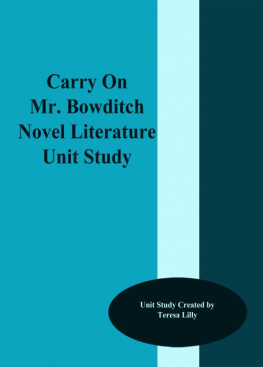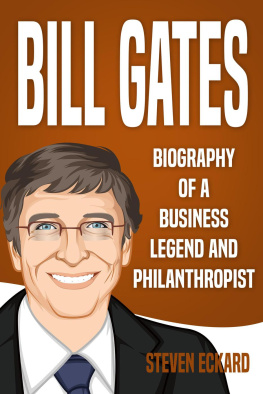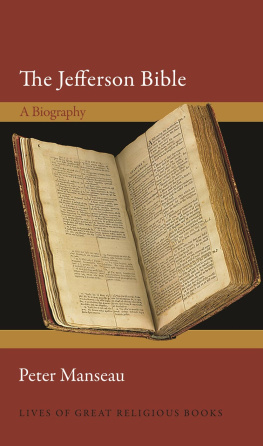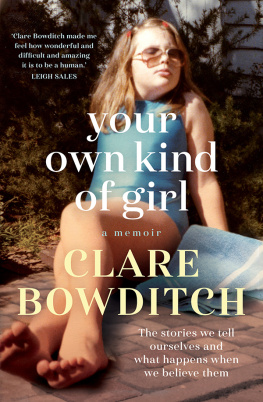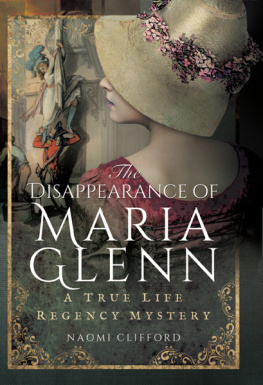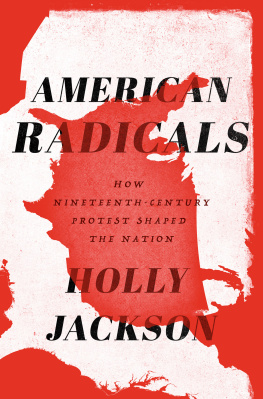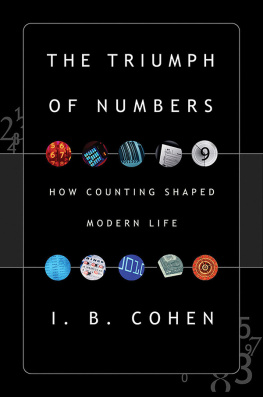Nathaniel Bowditch and the Power of Numbers
This book was published with the assistance of the Anniversary Fund of the University of North Carolina Press.
2016 The University of North Carolina Press
All rights reserved
Set in Arno by codeMantra
Manufactured in the United States of America
The paper in this book meets the guidelines for permanence and durability of the Committee on Production Guidelines for Book Longevity of the Council on Library Resources.
The University of North Carolina Press has been a member of the Green Press Initiative since 2003.
Cover illustration: Charles Osgood, Nathaniel Bowditch, 1835. 2006 Peabody Essex Museum. Photo by Mark Sexton.
Library of Congress Cataloging-in-Publication Data
Thornton, Tamara Plakins, 1957 author.
Nathaniel Bowditch and the power of numbers : how a nineteenth-century man of business, science, and the sea changed American life / Tamara Plakins Thornton.
pages cm
Includes bibliographical references and index.
ISBN 978-1-4696-2693-2 (cloth : alk. paper)ISBN 978-1-4696-2694-9 (ebook)
1. Bowditch, Nathaniel, 17731838. 2. AstronomersUnited StatesBiography. 3. MathematiciansUnited StatesBiography. 4. Industrial organizationUnited StatesHistory. I. Title.
QB36.B7T55 2016
510.92dc23
[B]
2015032057
For my daughters, Lydia Sarah and Dora Jane,
And my sisters, Naomi and Ava.
And in memory of my mother,
Edith Sarah Fischgrund Plakins
(February 25, 1920February 25, 2010).
You have never left us.
Contents
Illustrations
Salem in the 1770s
William Boyds mathematical thesis of 1796
Saint-Denis, Runion, 1828
Manila, 1797
A table from Bowditchs 1802 Navigator
A portion of Babbages 1833 difference engine
East India Marine Society sign, 1803
The Bowditch house in Salem
A Boston tea party of the 1820s
A table from MacLaurins Treatise of Fluxions of 1742
A page from Laplaces Mcanique Cleste of 1799
State Street, Boston, ca. 1837
No. 3. Application for a Deferred Annuity, 1823
Bowditchs study in Salem, 181123
Receipt for mortgage interest payment, 1837
Bowditchs study in Boston, 182338
Harvard in 1835
Jean Antoine Houdon Sculpting the Bust of Pierre Simon de Laplace
Memorial statue of Bowditch, Mount Auburn Cemetery, erected 1847
Acknowledgments
Just before he died, Bowditch had all his personal letters burned, though likely hoping that he would be remembered for his contributions to scholarship, he spared his scientific correspondence. Thanks to the many repositories that have kept letters he sent and the papers of institutions with which he was associated, Bowditch could not consign the entire record of his life to the flames. My first debts are therefore to the uniformly helpful librarians and archivists at these repositories: the American Philosophical Society; the Andover-Harvard Theological Library, Harvard Divinity School; the Archives of the Massachusetts General Hospital; the Baker Library, Harvard Business School; the Boston Athenaeum; the Boston Public Library; the Carl A. Kroch Library, Division of Rare and Manuscript Collections, Cornell University; the Countway Library of Medicine, Harvard Medical School; the Harvard University Archives; the Historical Society of Pennsylvania; the Knox College Library, Special Collections and Archives; the Massachusetts Historical Society; the Massachusetts State Archives; the National Library of Scotland; the Phillips Library, Peabody Essex Museum; the Rauner Special Collections Library, Dartmouth College; the Rhode Island Historical Society; the Royal Irish Academy; the Royal Society of London; and the State Library of Massachusetts. I owe a particular debt of gratitude to Irene Axelrod and Kathy Flynn at the Phillips Library; Kimberly Reynolds at the Boston Public Library; and the Massachusetts Historical Society, which supported my work with an Andrew W. Mellon research fellowship. I am grateful as well to Nate and Susan Bowditch, who generously shared with me Bowditchs apprentice diary from their personal collection. At my own institution, the State University of New York, Buffalo, the Interlibrary Loan Office, led by the ever helpful Ann Bouvier, has been invaluable. Thanks go as well to the Journal of the Early Republic and the New England Quarterly for permission to incorporate materials published in early versions in those journals.
My university has also supported my research, with grants from the history departments Lockwood Fund and with a fellowship at the College of Arts and Sciences Humanities Institute. The latter presented me with time to focus on writing, with a community of fellow scholars, and with its public lecture series and its sponsorship of a Science Studies Reading Group, genuinely useful forums to present my work. I owe a debt of gratitude as well to my departmental colleagues who have lent their support and assistance in many ways, especially James Bono, Susan Cahn, David Gerber, Erik Seeman, and Liana Vardi. Gail Radford deserves special thanks for the expert historians eye she lent to the manuscript as it neared completion.
My colleagues in the profession have shaped this project, pointing me toward works of scholarship, sharing their own work, offering feedback to my conference presentations and written drafts, and helping me think about the shape of a biographical project. Much of this interchange can in some way be traced back to my second professional home, the Society for Historians of the Early American Republic, an organization that welcomed me as a graduate student and has ever maintained an unusually hospitable and convivial academic culture. My thanks go to Ed Balleisen, Hannah Farber, Paul Gilje, Myra Glenn, Josh Lauer, Sharon Ann Murphy, Rich Newman, Mary Beth Norton, Craig Robertson, Caitlin Rosenthal, Amy Dru Stanley, Joe Torre, and Rachel Van. My colleagues of many years, Jim Stewart, Chris Clark, Richard John, and Randy Roth, have offered me their powerful intellectual insights and their steadfast friendship. I am ever grateful for both. Randy Roth and Daniel Vickers provided me with enormously discerning evaluations of the entire manuscript, and I have tried to do justice to the issues they raised. Allison Sweeney also reviewed the entire manuscript, and her pitch-perfect editorial guidance helped me strike the right tone and express myself with greater clarity. And Chuck Grench offered me pointed, truly invaluable advice along with his support of the project.
Given the nature of the some of the subject matter, I also sought the help of three quantitative scientists. My cousin Yuval Filmus evaluated the content of Bowditchs mathematical papers. It is always good to have a mathematician in the family, especially one whose talents and loyalties go well beyond mathematics. My dear friend Tony Auerbach argued with me over what it means to be a scientist. I listened, though I am sure we will argue again. And Harvard physicist George Brandenburg generously shared with me his own work on Bowditch the navigator, vetted my presentation of Bowditchs science, and in a particularly thought-provoking exchange reflected on the scientists aesthetic appreciation of the universe. I am so sorry that he died before I could meet him in person.
My completion of this project casts my memory back to the many teachers to whom I owe so much. My remarkable fifth-grade teacher, Barbara Livingston, and my equally remarkable high school history teacher, Howard Preston, introduced me to intellectual labor as a realm of curiosity, adventure, and meaning. In college, I was inspired by both the professors and the graduate students in the history of science department. It has been my privilege to cite two of them in this book: Lorraine Daston, whose contributions in Erwin Hieberts class made a powerful impression on me my freshman year, and Joan Richards, my sophomore tutor who had us reading Henri Poincar with gusto. In my junior year, Professor Hiebert generously met with me weekly to discuss the
Next page


